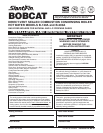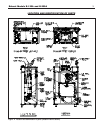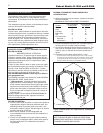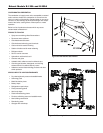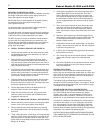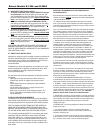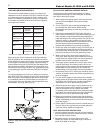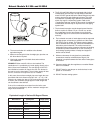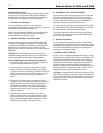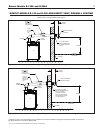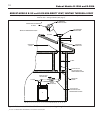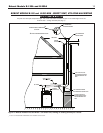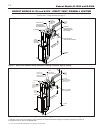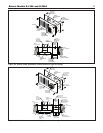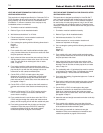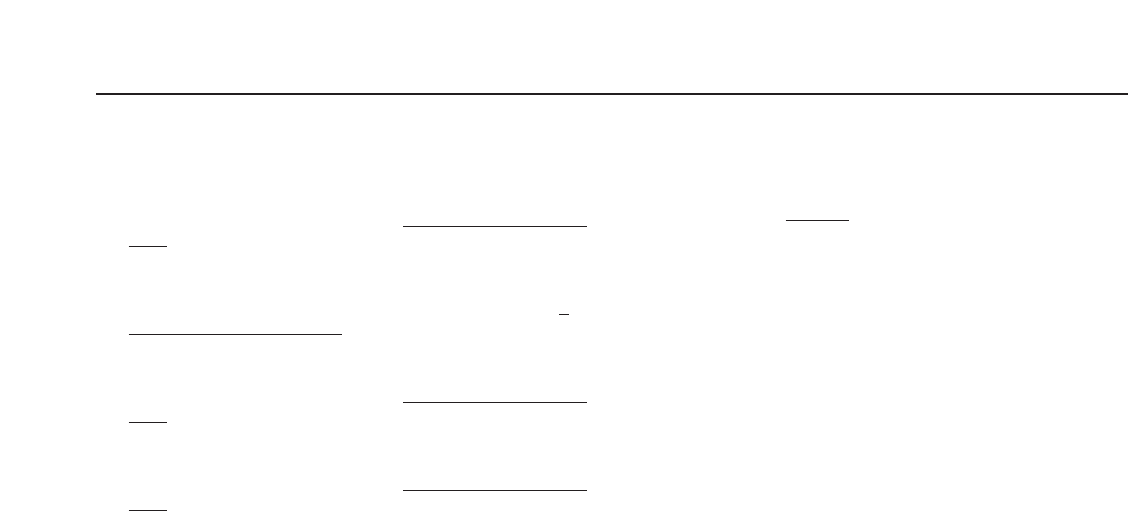
A. NON-DIRECT VENT INSTALLATION
1. Air drawn horizontally from outdoors DIRECTLY through
a
n outside wall;
o
ne louvered opening near the floor and
one louvered opening near the ceiling, each opening with a
minimum FREE air passage area of
1 square inch per 4000
Btuh of total appliances’ input.
2.
Air drawn horizontally through HORIZONTAL DUCTS;
o
ne opening near the floor and one opening near the ceiling,
each opening with a minimum FREE air passage area of
1
square inch per 2000 Btuh of total appliances’ input.
3.
Air drawn VERTICALLY from outdoors; one opening at the
floor and one opening at the ceiling, each opening with a
m
inimum FREE air passage area of
1
square inc
h
per 4000
Btuh of total appliances’ input.
4.
Air drawn from inside the building; one opening near the
floor and one opening near the ceiling, each opening with a
minimum FREE air passage area of
1 square inch per 1000
Btuh of total appliances’ input.
IF BOILERS ARE INSTALLED ADJACENT TO OTHER FUEL
BURNING EQUIPMENT, THE AREA OF FREE OPENINGS
MUST BE APPROPRIATELY INCREASED TO ACCOMMODATE
THE ADDITIONAL LOAD.
B. DIRECT VENT INSTALLATION
Adequate air supply should be provided to prevent overheating of
the boiler controls and boiler room. Openings for passage of air
into the boiler room for direct-vent installation must be at least
1
⁄2
of the openings required for the non-direct vent as
mentioned above.
If additional non-direct vent appliances are installed in the same
space and adequate air openings are provided for them, there
are no additional air openings required for the Bobcat
B-120 and B-200 boilers.
For both direct and non-direct installation, the following must be
considered:
- Openings must never be reduced or closed. If doors or
windows are used for air supply, they must be locked
open.
- Protect against closure of openings by snow and debris.
Inspect frequently.
-
No mechanical draft exhaust or supply fans are to be
used in or near the boiler area.
- Boiler area must never be under negative pressure.The
flo
w of combustion and v
entilating air to the boiler m
ust
not be obstructed.
FLUE GAS VENTING REQUIREMENTS
The Bobcat B-120 and B-200 series boilers are high efficiency,
mechanically f
orced draft boilers and, theref
ore, require different
v
enting arrangements than natural draft, lower efficiency boilers.
THE FOLLO
WING INSTR
UCTIONS MUST BE CAREFULL
Y
READ AND FOLLO
WED IN ORDER T
O A
VOID ANY HAZ-
ARDOUS CONDITIONS DUE TO IMPROPER INSTALLATION
OF THE AIR INTAKE AND FLUE GAS VENTING SYSTEM.
The vent piping installation MUST be in accordance with these
instr
uctions and with ANSI Z223.1-latest edition NA
TIONAL
FUEL GAS CODE, Part 7, Venting of Equipment. Other local
codes may also apply and must be followed. Where there is a
conflict betw
een these requirements
, the more str
ingent case
shall apply
.
The use of a v
ent damper is NOT permitted on this
boiler ser
ies.
ADDITIONAL REQUIREMENTS FOR THE COMMONWEALTH
OF MASSACHUSETTS
When the Bobcat is installed and used in the Commonwealth of Massa-
chusetts, the following additional requirements pursuant to Massachusetts
code 248 CMR MUST be met:
(1). Exisiting chimneys shall be permitted to have their use continued
when a gas conversion burner is installed, and shall be equipped with a
manual reset device that will automatically shut off gas to the burner in the
event of a sustained back-draft.
(2)(a). For all side wall horizontally vented gas fueld equipment installed in
every dwelling, building or structure used in whole or part for residential
purposes, including those owned or operated by the Commonwealth and
where the side wall exhaust vent termination is less than seven (7) feet
above finsihed grade in the area of the venting, including but not limited to
decks and porches, the following requirements shall be satisfied:
1. INSTALLATION OF CARBON MONOXIDE DETECTORS. At the time
of installation of the side wall horizontal vented fueled equipment, the
installing plumber or gasfitter shall observe that a hard wired carbon
monoxide detector with an alarm and battery back-up is installed on the
floor level where the gas equipment is to be installed. In addition, the
installing plumber or gasfitter shall observe that a battery operated or hard
wired carbon monoxide detector with an alarm is installed on each addi-
tional level of the dwelling, building or structure served by the side wall
horizontal vented gas fueled equipment. It shall be the responsibility of the
property owner to secure the services of qualified licensed professionals
for the installation of hard wired carbon monoxide detectors.
a. In the event that the side wall horizontally vented gas fueld equipment
is installed in a crawl space or an attic, the hard wired carbon monoxide
detector with alarm and batter
y bac
k up may be installed on the next adja-
cent floor le
vel.
b. In th event that the requirements of this subdivision can not be met at
the time of completion of installation, the o
wner shall have a period of thir-
ty (30) days to comply with the above requirements; provided, however,
that dur
ing said thir
ty (30) day period, a battery operated carbon monoxide
detector with an alarm shall be installed.
2. APPROVED CARBON MONOXIDE DETECTORS. Each carbon
monoxide detector as required in accordance with the above provisions
shall comply with NFPA 720 and be ANSI/UL 2034 listed and IAS certified.
3.
SIGNA
GE.
A metal or plastic identification plate shall be per
manently
mounted to the exterior of the building at a minimum height of eight (8)
feet above grade directly in line with the exhaust vent terminal for the hori-
z
ontally v
ented gas fueled heating appliance or equipment. The sign shall
read, in print size no less that one-half (1/2) inch in size,
“GAS VENT
DIRECTLY BELOW, KEEP CLEAR OF ALL OBSTRUCTIONS”.
4. INSPECTION. The state or local gas inspector of the side wall horizon-
tally vented gas fueled equipment shall not approve the installation unless,
upon inspection, the inspector obser
v
es carbon mono
xide detectors and
signage installed in accordance with the provisions of 248 CMR
5.08(2)(a)1 through 4.
(b) EXEMPTIONS. The following equipment is exempt from 248 CMR
5.08(2)(a)1 through 4:
1.
The equipment listed in Chapter 10 entitled
“Equipment Not
Required TO Be Vented” in the most current edition of NFPA 54 as
adopted by the Board; and
2. Product Approved side wall horizontally vented gas fueled equip-
ment installed in a room or str
ucture separ
ate from the dw
elling, build-
ing or structure used in whole or part for residential purposes.
Bobcat Models B-120A and B-200A
7



